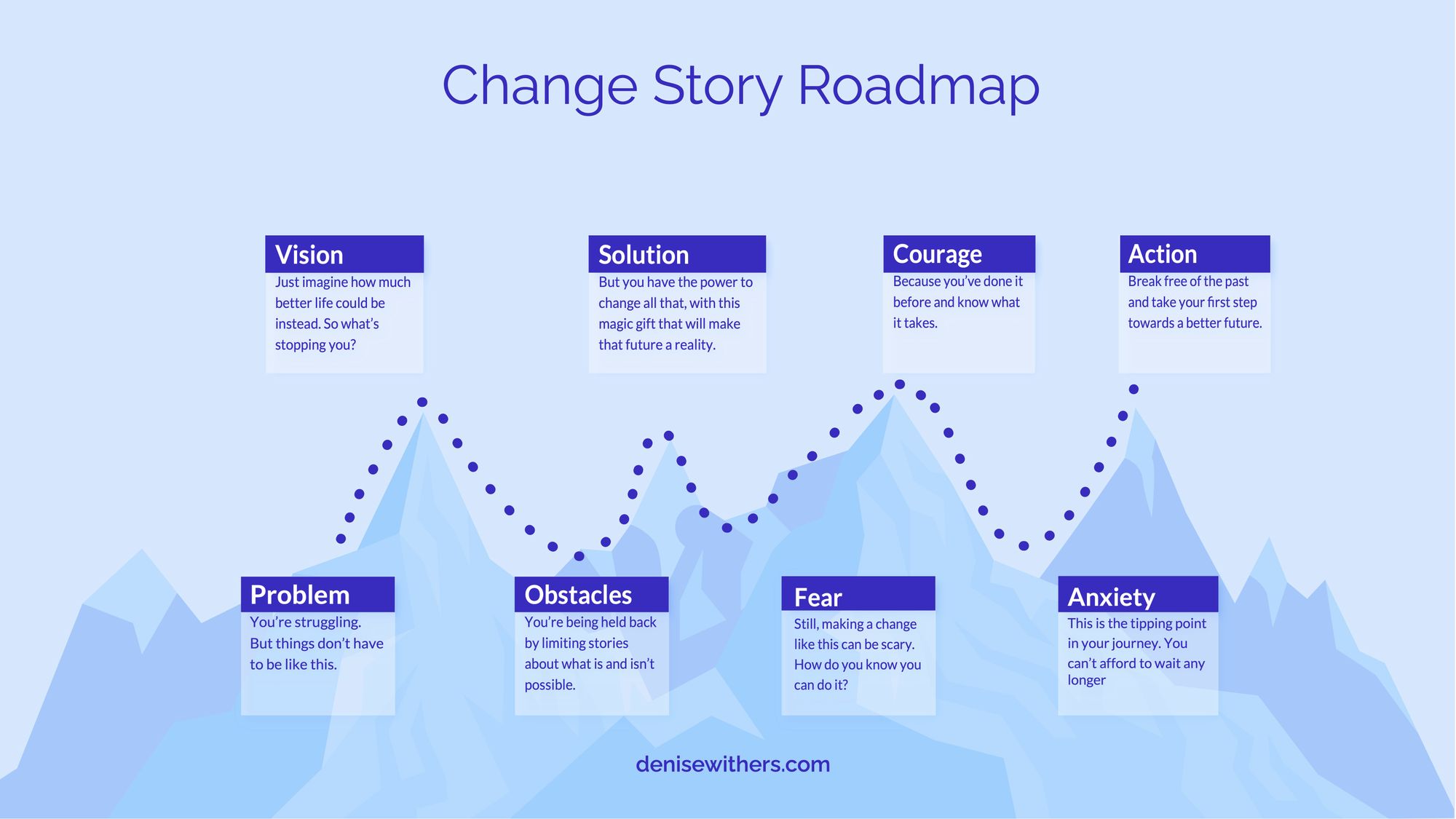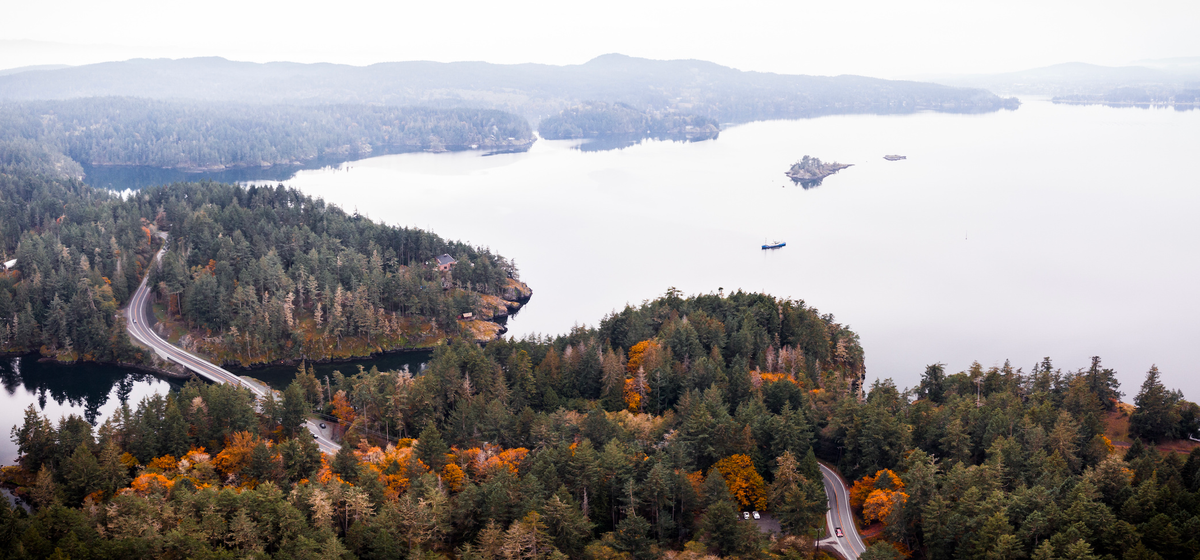Over the last couple of years, leaders of a popular coastal town in BC have been exploring ways to cut their greenhouse gas emissions. Research showed that they’d have the biggest, fastest impact by getting residents to stop commuting (or at least stop driving gas-powered cars to work) and install heat pumps to replace oil, gas and wood as home heating sources. They had the best scientific research and data to share with people to show them why they should switch to clean energy. But they knew they’d need more. Why?
Because most people already know what they need to do to tackle climate change. They’ve known for years. The town would need something else to get people to change their behaviour and take action.
They’d need a new story. A Change Story.
A story that would replace the negative stories people were already telling themselves about why they can’t take action – then show them a clear path to a better future and inspire them to make it happen. So the town hired me to help them create one.
How Change Stories work
Change Stories have been around forever – though in different forms. Some people call them pitch, future, sales or leadership stories. Thousands of articles have been written to convince you that you need them. But few people can tell you exactly how to research, design and use them strategically to change behaviour and inspire action.
So let’s take a look at how they work.
Think of a Change Story as a creative roadmap for behaviour change. It brings your purpose, goals, vision and strategy together into an irresistible story that shifts behaviour and inspires action for all kinds of change – individual, cultural and system.

Over the past 35 years, I’ve helped leaders use Change Stories to do everything from reducing chronic disease to advancing clean energy. The approach I use includes techniques borrowed from storytelling greats ranging from King to Kennedy.
But the best thing about Change Stories is that anyone can create them, with these five steps.
5 Steps to Creating a Change Story
- Start with a problem or opportunity that matters to the audience.
- Contrast that with a vision of a better future.
- Help them discover what’s holding them back.
- Show them how to get from here to there.
- Tell them what to do to get started.
The real power of Change Stories
While most people think that the power of Change Stories comes from their ability to influence others when you share them, my experience shows that’s not true.
On every single project I’ve done, the real power of Change Stories is in the design process.
Because you can’t create a compelling story until you get crystal clear about a few things. That clarity becomes priceless in helping you focus your change resources and energy to get the right people to take the right action to create the right outcome.
When we started our project, my client had a lot of great ideas about tactics we could use to help people take action. But we needed clarity about several things. Most importantly, we needed to find out why people weren’t taking action to tackle climate change in the first place.
So we designed a simple narrative inquiry project, where my clients went out to talk to people outside their own circles who represented their target audience, to hear their climate action stories. What we learned from that exercise became the foundation of the Change Story.
It turned out that people really did want to do the right thing. But they were burned out, and simply didn’t have the time or energy to figure out how, exactly, they should make change. For example, finding out what size heat pump they needed. Or how to install a home charger for an electric car. Plus, they were carrying around a lot of misinformation in the form of myths, about the true cost and benefits of things like electric vehicles and alternate energy sources.
Figuring out what stories were holding people back BEFORE starting to design the master Change Story was key to helping us develop the rest of the campaign strategy. In the design thinking world, they call this work problem definition.
The other thing that makes Change Stories so powerful is the vision of the future they share.
Change Stories bring the future to life
When we try to “sell” people on a product, service or idea, we often forget that we’re not selling the thing itself. We’re actually selling a future experience – we have to show people how their lives will be better if they choose to make change and “buy into” our thing.
This part of the work is critical and it’s something few people spend enough time on. Too often, leaders whip up some generic blabbity-blah about the future and call it a vision statement. They forget that stories have the power to transport us from our (relatively unpleasant) current place to a (much more desirable) future place.
“Just imagine … ” are two of the most powerful words a leader can use. They’re like a ticket to a virtual reality experience that can change the way someone thinks and feels forever.
In the Change Story we designed for the town, we built several visions of the future that included real, specific quality of life experiences that our research showed our target audience wanted.
More importantly, after running an analysis of all the things we found that people wanted, we were able to create a high-level theme to help us start to shift the narrative on climate action. Instead of telling people Change Stories that involved loss and sacrifice to cut climate pollution, we were able to show them how climate action could actually help them get more of what they want, and build their dream life right there in the town.
So far, feedback to the Change Story has all been positive. People love the hopeful feel and appreciate the details that help them start to take action, one small step at a time.
Are you using Change Stories in your work? I’d love to hear how it’s going! And if you’d like to hear more examples of what others are doing, be sure to check out my podcast, “Foreward: How stories drive change.“





